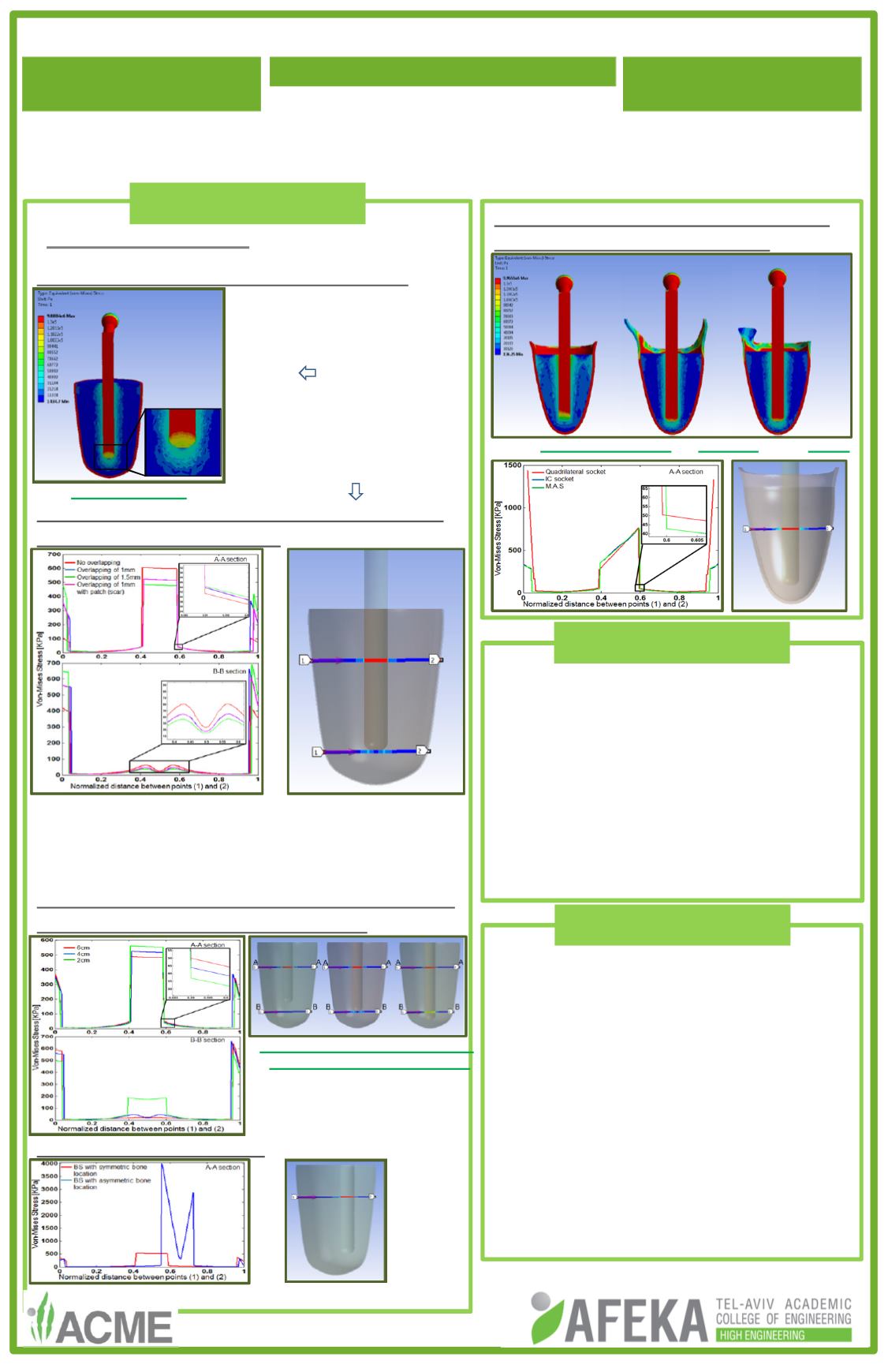
Student name:
Dennis Dashevsky
Department:Medical Engineering
Advisor name:
Dr. SaraNaftali
Strainsand stresses inprostheticsocket
2014
---
2
4.1. NumericalModel
Stress distribution in the stumpwithin BS
Different overlapping between the stumpand
the socket in theBSmodel
The stresses in the soft tissue inA-Asection
increase and inB-B section decreaseas the
overlapping with the socket increases.
Different distance between the truncated bone
and the bottom of the stumpwith BS
Different bone’s locations
•
The obtained stress values are
correlatedwith the overlapping and
truncated bone length.
•
The asymmetric bone location causes
asymmetric and higher stress
distribution.
•
Stresses distribution in the stumpwith
IC socket andM.A.S are similar and
lower thanwith quadrilateral socket.
Basic socket (BS)
Stress distribution in the stumpwithin
different trans-femoral sockets
•
Wellmatched socketwith optimal
overlapping causes low stresses in the
stump, but still well fitted to the stump.
•
Thick soft tissue padding decreases
stresses in the bottom of the stump,
but increases stresses along the bone.
•
Asymmetric bone location causes
higher stress concentration at the area
with the thick soft tissue padding.
•
Amputeewearing quadrilateral socket
has ahigher risk of deep tissue injury
development in the stump.
4
.
Results
5
.
Discussion
6
.
Conclusions
Different distance from thebone
end to thebottomof thestump
A
A
B
B
4cm
2cm
6cm
Asymmetricbone location
A
A
M.A.S
IC socket
Quadrilateral socket
A
A
Quadrilateral socket
The highest stresses
distribution in the stump
soft tissue is along the
femur.
Profile dataexamined at
2 cross-sections:
6cm (A-A), 16.1cm (B-B)
from the topof the stump.
Short bone causes high
stresses atA-Asection.


